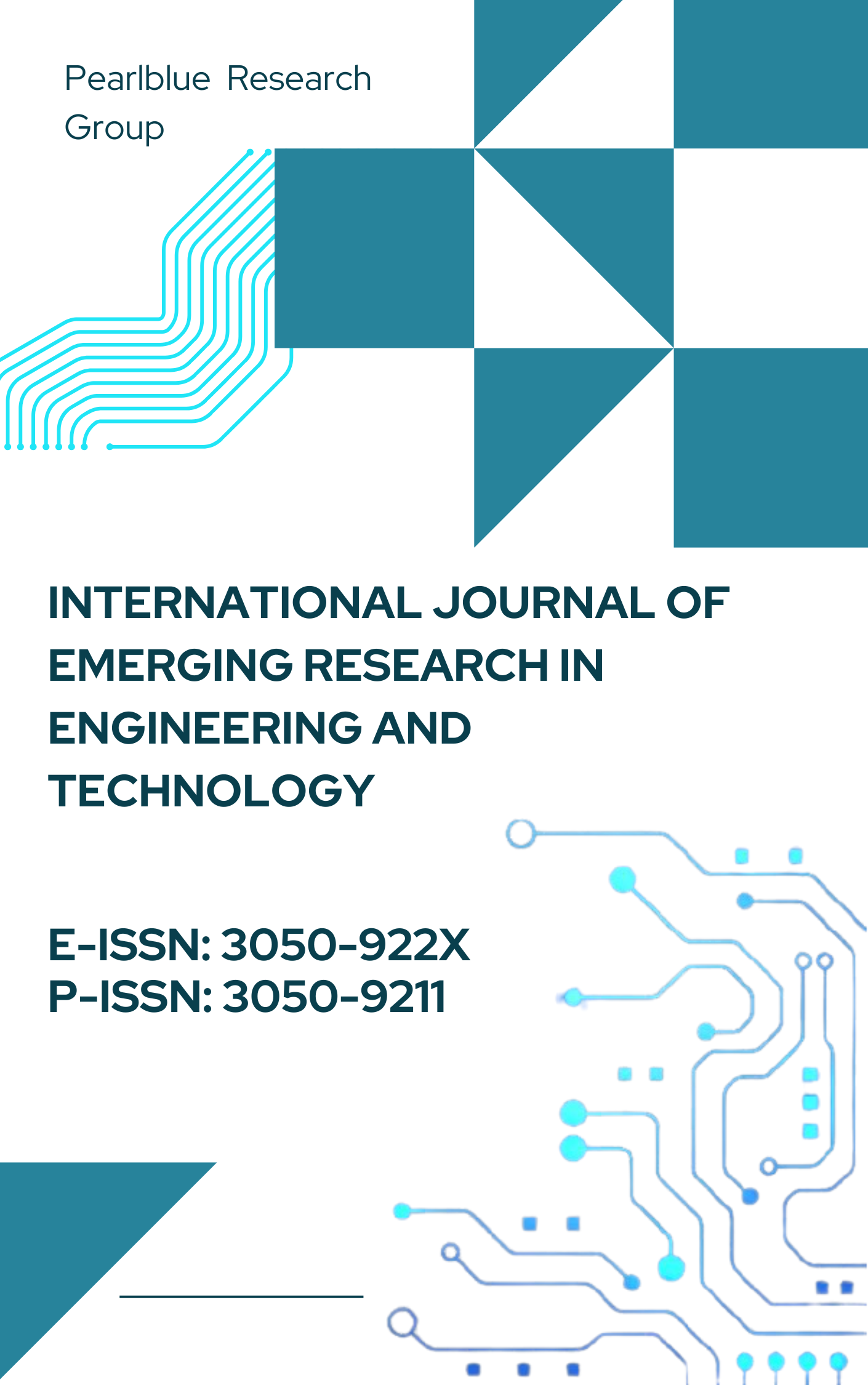Real-time Decision-Making in Fusion ERP Using Streaming Data and AI
DOI:
https://doi.org/10.63282/3050-922X.IJERET-V2I2P108Keywords:
Real-time Analytics, Fusion ERP, Oracle Stream Analytics, Artificial Intelligence, Business Intelligence, Streaming Data, Event ProcessingAbstract
In the modern, hotly competitive and data-driven environment of enterprise, it is not enough to see occasional reports; companies need real-time, intelligent data to make decisions in their operations. Still, concerning the old yardstick, the most traditional ERP systems, such as Oracle Fusion ERP, are configured to accommodate batch processes and retrospective analysis. Yet, the increased frequency of events in the business environment, including order processing, inventory updates, customer interaction, and others, has led to the need for the shift to real-time analytics. This paper discusses how to integrate Oracle Stream Analytics with Fusion ERP to achieve an event-driven system architecture that responds to business cues promptly. Through interactive use of an AI model within the analytics pipeline, we illustrate to the enterprise how it can automate real-time decisions, notably the detection of anomalies in transactions, predictive scheduling and planning of resources, and exception handling. We introduce a modular architecture that performs streaming ingestion, real-time event transformation, and inference over operational data using AI. Deployment patterns are given according to the use cases, like live cash flow tracking and real-time optimization of procurement. The improvements to decision latency, operational accuracy and responsiveness to business events are measurable in our results. This work will assist in discovering a framework to improve the intelligence of ERP using contemporary streaming and AI technologies that can be replicated. The combination presents an excellent digital transformation plan that business leaders should utilise to shift their operations and become more proactive
References
[1] Dillon, T., Wu, C., & Chang, E. (2010, April). Cloud computing: issues and challenges. In 2010, the 24th IEEE International Conference on Advanced Information Networking and Applications (pp. 27-33). IEEE.
[2] Gama, J., Žliobaitė, I., Bifet, A., Pechenizkiy, M., & Bouchachia, A. (2014). A survey on concept drift adaptation. ACM computing surveys (CSUR), 46(4), 1-37.
[3] Zaharia, M., Xin, R. S., Wendell, P., Das, T., Armbrust, M., Dave, A., ... & Stoica, I. (2016). Apache spark: a unified engine for big data processing. Communications of the ACM, 59(11), 56-65.
[4] Machado, G. V., Cunha, Í., Pereira, A. C. M., & Oliveira, L. B. (2019). DOD ETL: Distributed On Demand ETL for Near Real Time Business Intelligence. arXiv preprint. Describes a near real time ETL architecture that dramatically speeds up data loading in business intelligence systems.
[5] Ganesh, K., Mohapatra, S., Anbuudayasankar, S. P., & Sivakumar, P. (2014). Enterprise resource planning: fundamentals of design and implementation. Springer.
[6] Diro, A. A., & Chilamkurti, N. (2018). Distributed attack detection scheme using a deep learning approach for the Internet of Things. Future Generation Computer Systems, 82, 761-768.
[7] Bayyapu, S., Turpu, R. R., & Vangala, R. R. (2019, October 31). Advancing Healthcare Decision Making: The Fusion of Machine Learning, Predictive Analytics, and Cloud Technology. International Journal of Computer Engineering and Technology (IJCET), 10(5), 157–170. Focuses on integrating ML, predictive analytics, and cloud for healthcare decision support.
[8] Akyurt, İ. Z., Kuvvetli, Y., & Deveci, M. (2020). Enterprise resource planning in the age of industry 4.0: A general overview. Logistics 4.0, 178-185.
[9] Glowalla, P., & Sunyaev, A. (2014). ERP system fit–an explorative task and data quality perspective. Journal of Enterprise Information Management, 27(5), 668-686.
[10] Ge, S., Isah, H., Zulkernine, F., & Khan, S. (2019). A Scalable Framework for Multilevel Streaming Data Analytics using Deep Learning. arXiv preprint. Introduces a scalable hybrid streaming plus offline analytics framework using Spark Streaming and LSTM for real time text analytics.
[11] Pareek, A., Khaladkar, B., Sen, R., Onat, B., Nadimpalli, V., Agarwal, M., & Keene, N. (2017, August). Striim: A streaming analytics platform for real-time business decisions. In Proceedings of the International Workshop on Real-Time Business Intelligence and Analytics (pp. 1-8).
[12] Haug, A., Stentoft Arlbjørn, J., & Pedersen, A. (2009). A classification model of ERP system data quality. Industrial Management & Data Systems, 109(8), 1053-1068.
[13] Mehmood, E., & Anees, T. (2020). Challenges and solutions for processing real-time big data stream: a systematic literature review. IEEE Access, 8, 119123-119143.
[14] Stackowiak, R., Rayman, J., & Greenwald, R. (2007). Oracle data warehousing & business intelligence Solutions. John Wiley & Sons.
[15] Isah, H., Abughofa, T., Mahfuz, S., Ajerla, D., Zulkernine, F., & Khan, S. (2019). A survey of distributed data stream processing frameworks. IEEE Access, 7, 154300-154316.
[16] Katuu, S. (2020). Enterprise resource planning: past, present, and future. New Review of Information Networking, 25(1), 37-46.
[17] Basak, A., Venkataraman, K., Murphy, R., & Singh, M. (2017). Stream Analytics with Microsoft Azure: Real-time data processing for quick insights using Azure Stream Analytics. Packt Publishing Ltd.
[18] Arachchi, S. M., Chong, S. C., & Madhushani, A. G. I. (2015). Quality Assurance and Quality Control in ERP System Implementation. American Scientific Research Journal for Engineering, Technology, and Sciences (ASRJETS), 11(1), 70-83.
[19] Preece, A., Braines, D., Cerutti, F., & Pham, T. (2019). Explainable AI for intelligence augmentation in multi-domain operations. arXiv preprint arXiv:1910.07563.
[20] Xu, H., Horn Nord, J., Brown, N., & Daryl Nord, G. (2002). Data Quality Issues in Implementing an ERP. Industrial Management & Data Systems, 102(1), 47-58.
[21] Rusum, G. P., Pappula, K. K., & Anasuri, S. (2020). Constraint Solving at Scale: Optimizing Performance in Complex Parametric Assemblies. International Journal of Emerging Trends in Computer Science and Information Technology, 1(2), 47-55. https://doi.org/10.63282/3050-9246.IJETCSIT-V1I2P106
[22] Rahul, N. (2020). Vehicle and Property Loss Assessment with AI: Automating Damage Estimations in Claims. International Journal of Emerging Research in Engineering and Technology, 1(4), 38-46. https://doi.org/10.63282/3050-922X.IJERET-V1I4P105
[23] Enjam, G. R., & Chandragowda, S. C. (2020). Role-Based Access and Encryption in Multi-Tenant Insurance Architectures. International Journal of Emerging Trends in Computer Science and Information Technology, 1(4), 58-66. https://doi.org/10.63282/3050-9246.IJETCSIT-V1I4P107



